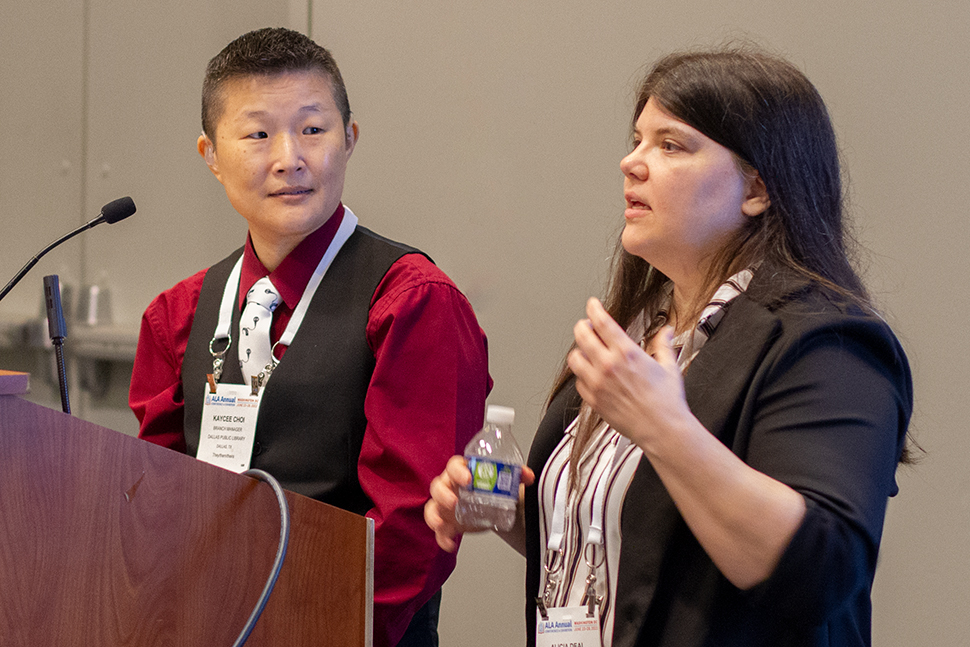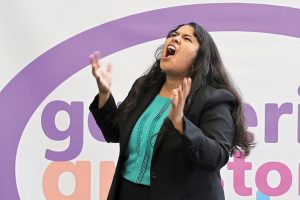
Alice L. Hagemeyer, retired librarian for the Deaf for DC Public Library, joined the American Library Association (ALA) in 1976. She says it was a time when people looked at American Sign Language (ASL) in a negative light and schools focused on teaching Deaf students how learn and speak English.
“After joining ALA, I saw a lot of changes,” said Hagemeyer, who now leads Bridging Deaf Cultures, an interest group of ALA’s Office for Diversity, Literacy, and Outreach Services.
While services and outreach to Deaf people have improved over the last 50 years, libraries could be doing more in this area. That was the takeaway of “Deaf Culture: A Strategy for Inclusive Deaf Community Engagement,” a June 26 session at ALA’s 2022 Annual Conference and Exhibition in Washington, D.C.
“It’s important to know that Deaf people generally don’t have access in a lot of ways,” Hagemeyer said. “At my school growing up, we never had a conversation about the history of Deaf people.”
This was the case for Alicia Deal, public services librarian at Dallas Public Library (DPL). She lost her hearing as a child and does not know ASL but taught herself how to read lips.
“I grew up in a small rural area where there was no resources and no Deaf community,” Deal said. For instance, she didn’t know she could ask for accommodations in college. “I grew up thinking I had to do [everything] myself because no one is going to help you.”
KayCee Choi, manager of DPL’s Grauwyler Park branch, had a similar experience as a kid after moving from Alaska to Texas, a state with fewer programs and resources for Deaf children. “I would hide in the library,” said Choi, who was mainstreamed into a public school with hearing students.
Together, Deal and Choi—the only two Deaf librarians who work at DPL—decided to collaborate on programming for National Deaf History Month, which takes place each April. Though the pandemic derailed their plans in 2020, the duo came up with a full slate of online events and promotions the following year, including an educational storytime about pioneering Deaf baseball player William Hoy, a trivia program about Helen Keller, and a series of book and movie recommendations about Deaf culture, people, and history. Every event included captioning and an ASL interpreter.
Another matter of business was improving DPL’s Sing & Sign program, which was historically run by a hearing person who didn’t know ASL or consult any Deaf people. “We learned how to sing ‘Itsy Bitsy Spider’ properly,” Choi joked.
Presenters agreed that sharing Deaf history and culture in libraries is important, for Deaf and hearing people alike. “Deaf culture includes customs, folklore, history, language, traditions, and values,” said Alec McFarlane, organizational development specialist for the National Literary Society of the Deaf.
To underscore this point, Laurent Holt, fourth great-grandson of Laurent Clerc, one of most well-known figures in American Deaf history, was invited to say a few words about his ancestor.
“Our hope for the future is more Deaf librarians … and better relationships with the Deaf community,” Choi added. “Our library provides Wi-Fi hotspots and laptops to the community, so why not also provide Deaf services?”


